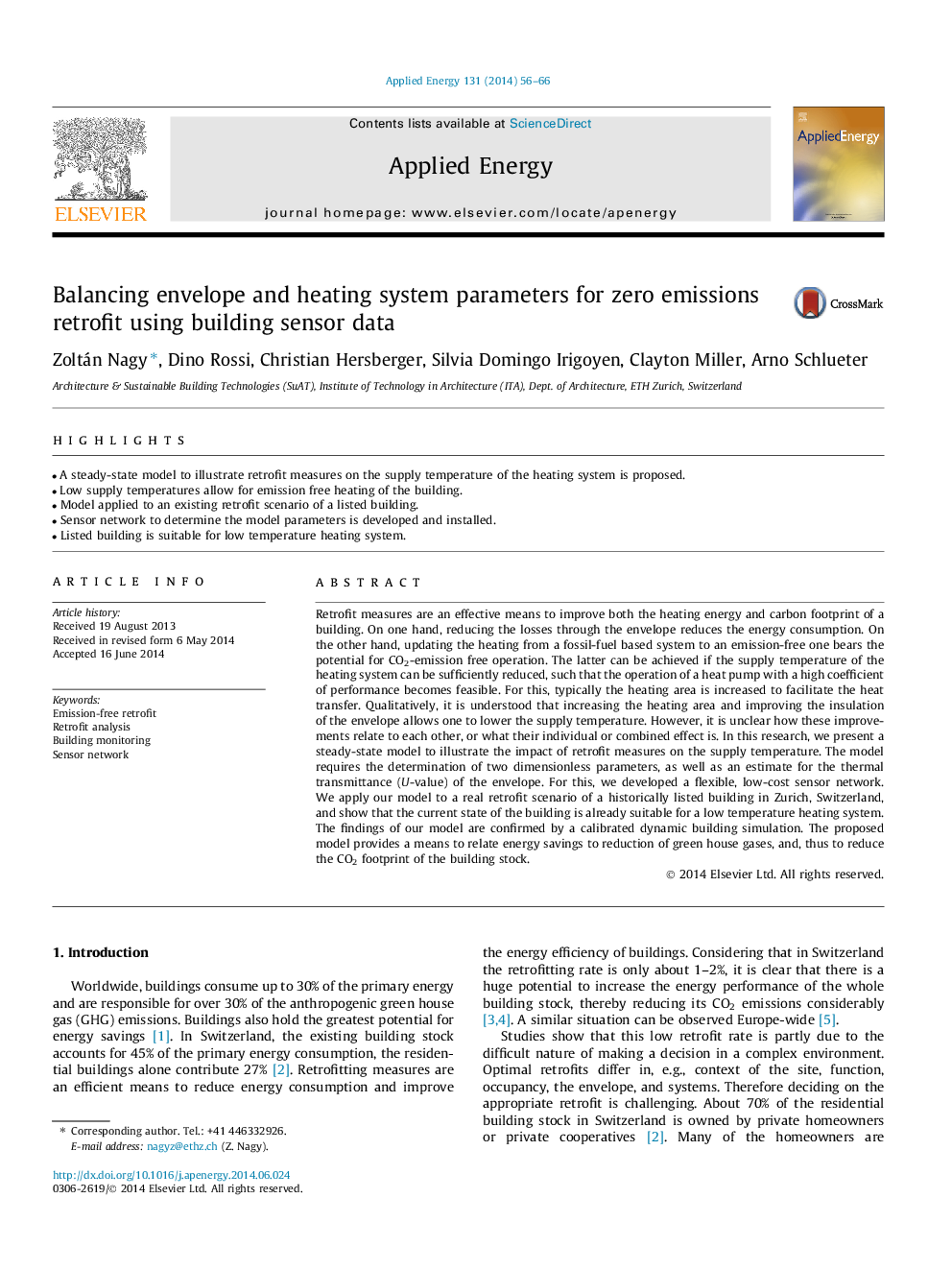| Article ID | Journal | Published Year | Pages | File Type |
|---|---|---|---|---|
| 6689937 | Applied Energy | 2014 | 11 Pages |
Abstract
Retrofit measures are an effective means to improve both the heating energy and carbon footprint of a building. On one hand, reducing the losses through the envelope reduces the energy consumption. On the other hand, updating the heating from a fossil-fuel based system to an emission-free one bears the potential for CO2-emission free operation. The latter can be achieved if the supply temperature of the heating system can be sufficiently reduced, such that the operation of a heat pump with a high coefficient of performance becomes feasible. For this, typically the heating area is increased to facilitate the heat transfer. Qualitatively, it is understood that increasing the heating area and improving the insulation of the envelope allows one to lower the supply temperature. However, it is unclear how these improvements relate to each other, or what their individual or combined effect is. In this research, we present a steady-state model to illustrate the impact of retrofit measures on the supply temperature. The model requires the determination of two dimensionless parameters, as well as an estimate for the thermal transmittance (U-value) of the envelope. For this, we developed a flexible, low-cost sensor network. We apply our model to a real retrofit scenario of a historically listed building in Zurich, Switzerland, and show that the current state of the building is already suitable for a low temperature heating system. The findings of our model are confirmed by a calibrated dynamic building simulation. The proposed model provides a means to relate energy savings to reduction of green house gases, and, thus to reduce the CO2 footprint of the building stock.
Related Topics
Physical Sciences and Engineering
Energy
Energy Engineering and Power Technology
Authors
Zoltán Nagy, Dino Rossi, Christian Hersberger, Silvia Domingo Irigoyen, Clayton Miller, Arno Schlueter,
